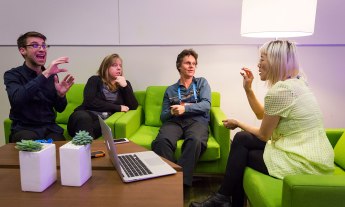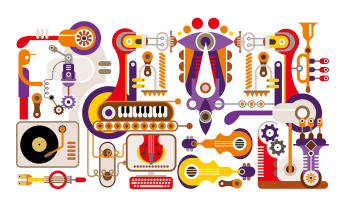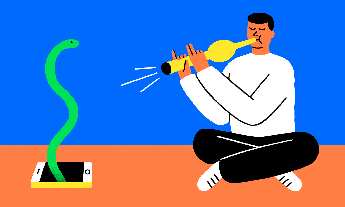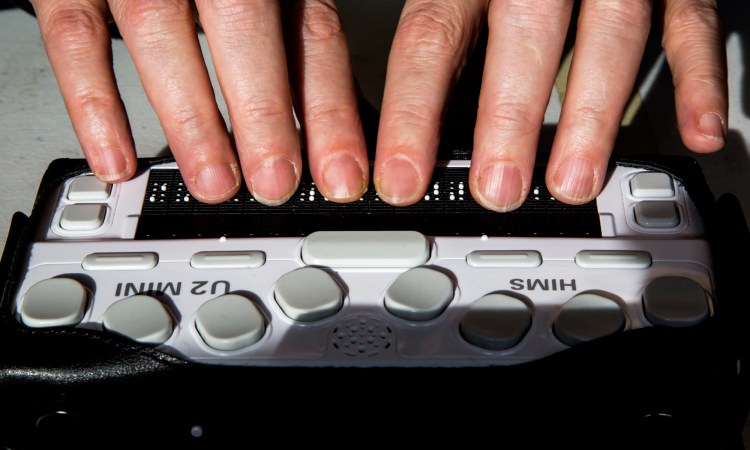
Designers have dreamed about creating a refreshable, affordable full-page Braille display, and a team at the University of Michigan has found an ingenious solution in bubbles. That’s right, bubbles.
Imagine you’re reading this article on an electronic device — but one that has a huge catch. The device can show you only five or six words at a time. And before you can proceed to the next grouping, you need to wait for the screen to refresh. Sound frustrating? Well, that’s the experience that many blind and visually impaired people have when they’re trying to read on a laptop or tablet, using a device that translates standard text into Braille. These refreshable Braille displays, which look like mini keyboards with a line of raised dots, typically connect to a laptop or a tablet via Bluetooth or USB. They display 14 to 80 characters at once — fewer than a tweet. Plus, the displays tend to be pricey, costing from around $1,000 to $15,000 each.
In a world where Internet-connected refrigerators and driverless trucks exist, is it too much to ask for a bigger, cheaper Braille reader? Sile O’Modhrain (TEDxLondonBusinessSchool Talk: Survival in the digital age) and a team at the University of Michigan say no. “We want to make a device that will let you read a Braille display in the same way that people read a book,” says O’Modhrain, the first blind sound engineer at BBC Network Radio and now a professor of music and information at the University of Michigan. She and a group of colleagues are building a full-page, refreshable, portable, affordable Braille display — a feat that has evaded developers for years.
Since Braille displays already exist, why can’t developers just scale up? The problem is cost. In computer Braille, each “cell” — the grouping of dots used to form a letter — contains eight dots, and the cells are refreshable and durable thanks to pins moved by electronics. A Braille display with 40 cells costs around $3,000, so a display with around 3,000 cells (the average number of letters on a standard page) would be at least $225,000. In 2013, a German company (funded by the German government) toyed with creating a full-page refreshable display for the blind, but the project was shelved after it was predicted the cost would be at least 45,000 Euros per device, or over $50,000 US.
O’Modhrain found a solution by looking at the technology that powers most Braille devices — and doing something different. Soon after she took a job at the University of Michigan in 2011, O’Modhrain ran into a colleague, Brent Gillespie, with whom she had created a computer mouse for the blind at Stanford University in the ’90s. The mouse used haptics — technology that relies on the sense of touch — to take computer graphics and turn them into physical sensations. For example, with their mouse, a checkbox felt springy when the user went over it. O’Modhrain realized the electronics that move the pins in existing Braille displays are hefty and not so agile, so she knew she wanted something smaller and nimbler. Gillespie, head of the haptics lab at Michigan, mentioned to O’Modhrain that Alex Russomanno, a postdoc graduate student in the lab, was working on something that might be used for a Braille device: super tiny bubbles that can move around in flexible material.
How could tiny bubbles address the Braille display problem? Building on Russomanno’s work, the Michigan team designed a machine that enables tiny bubbles, floating in fluid under a thin membrane, to raise Braille dots on command. One of their challenges was figuring out how to control the bubbles without using tons of electronics. Picture it like this: you have a bowl of water covered in plastic wrap. Pushed into the plastic wrap are 10 pins that together make the shape of a letter A. In the water are 10 bubbles. Now imagine getting the bubbles to move the pins up in unison, so that you have a raised A that can be felt by the human hand. This may not sound so difficult, but to create a full-page Braille display, the device must have thousands of pins, thousands of bubbles, and a complex order in which these pins need to be pushed up and down — on demand. Oh, and it all needs to be small enough to fit inside a Kindle or iPad.
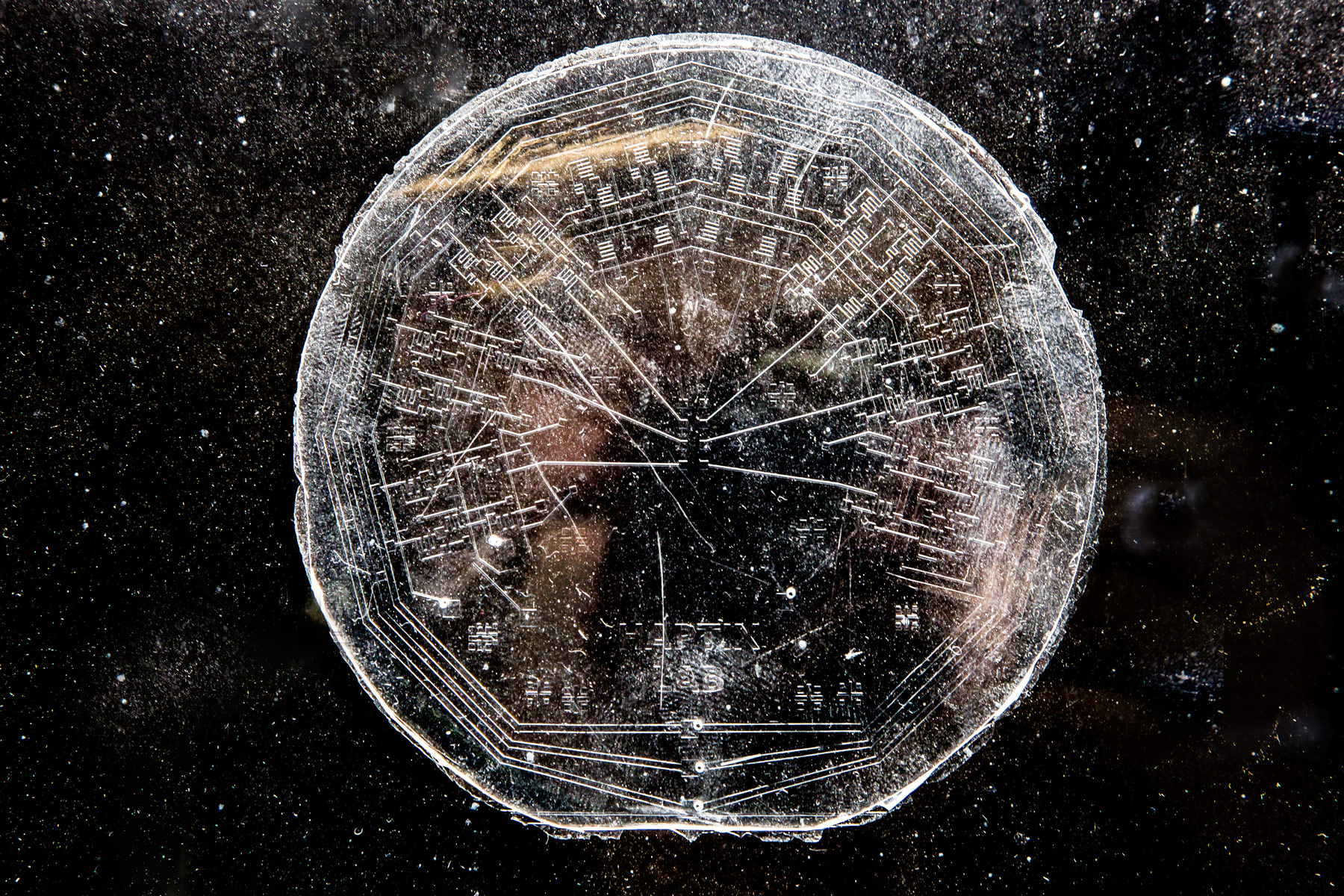
The team built “plumbing”– a series of teeny pipes, valves and chambers similar in scale to circuits on a microchip — to maneuver the bubbles. Air pressure transmitted through the plumbing makes the bubbles raise, and software controls the level of air pressure. Using air means less electronics and less bulky components. There isn’t a robotic arm moving a single pin up and down; there are just bubbles, directed by jets of air. “We never have to worry about wiring,” O’Modhrain says. “We never have to worry about assembling individual mechanical objects.
Using these bubbles, the “Holy Braille” would have line after line of Braille pins that can move. There wouldn’t need to be a traditional “screen” since the device is displaying tactile, 3D objects, not 2D images. The team’s first prototype was a single Braille cell of eight dots (enough for one letter). However, it was quite large: “the underlying guts of the device were about the size of the palm of your hand,” Russomano says. The developers intentionally made it large — “about 40 times bigger than it needs to be,” he says — so they could experiment with the technology. The team has succeeded in making the technology work on that scale, so now they’re focused on creating a full-size model. “All of the questions of scaling up have to do with the pipes and valves that control the device,” O’Modhrain says. “The thing with pipes and valves is that you can arrange them in many, many ways.” The team believes that with more funding and research, they should be able to release a beta device to testers in the next few years.
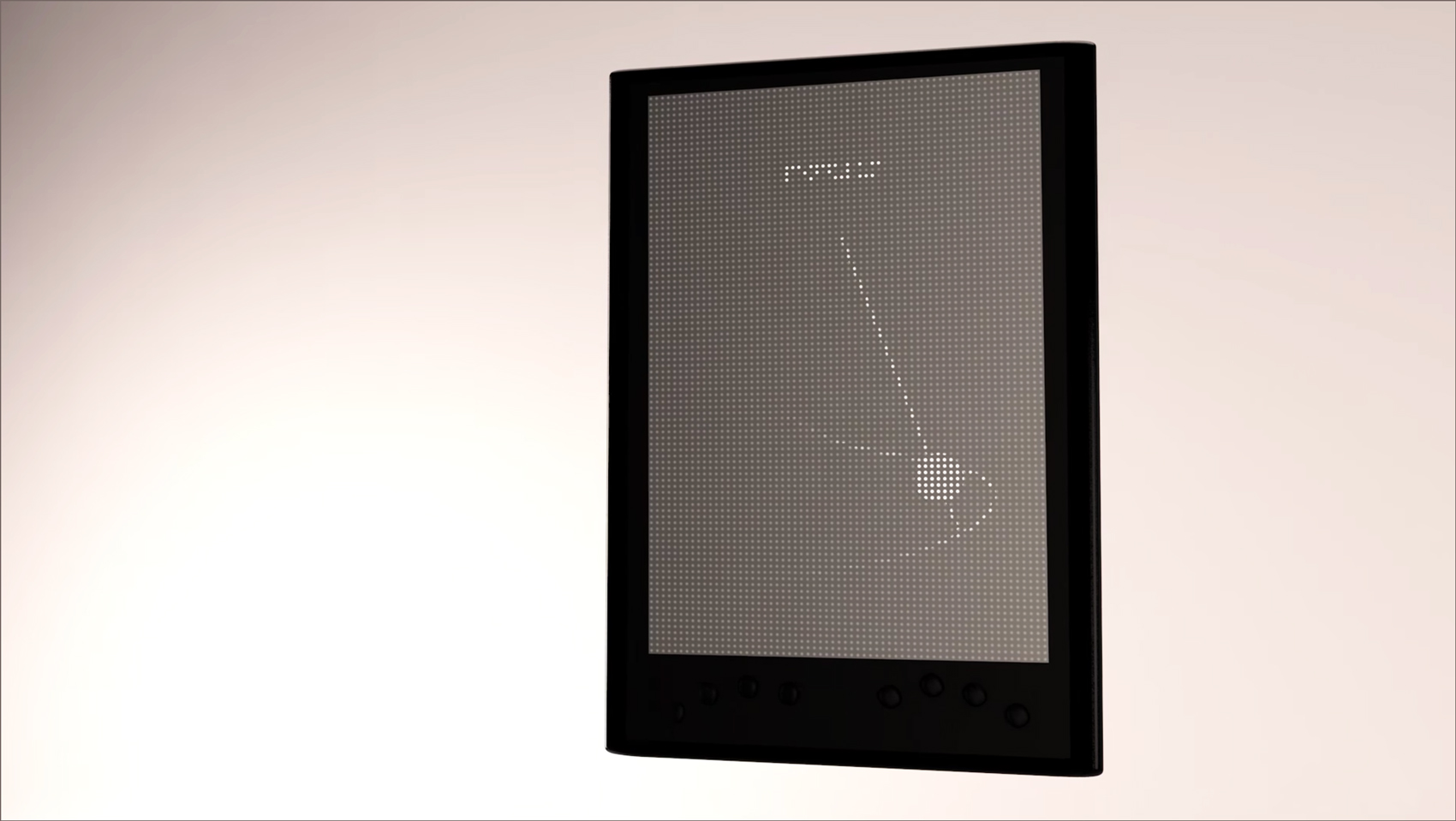
Readers of Braille deserve access to what’s already available to sighted people on their electronic devices. Listening to audiobooks is not the same as reading, O’Modhrain says. People reading in Braille show brain activity in their visual cortex, the same area that activates in the brains of sighted people when they read. Plus, affordable, full-page e-readers could completely transform the lives of blind students, who now rely on massive printed Braille books. Braille books are gigantic — the Braille version of Harry Potter and the Half-Blood Prince is nine volumes long, and a Braille conceptual physics textbook costs more than $4,000, contains 4,808 pages of text and 735 pages of graphics, and comes in 43 volumes. Imagine if a blind student could read this same textbook on a portable tablet. Thanks to the University of Michigan team, this dream is coming closer to becoming a reality.









